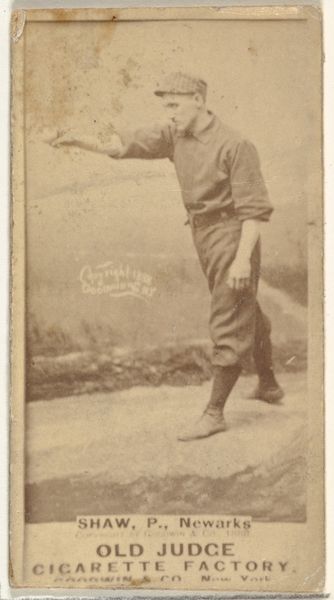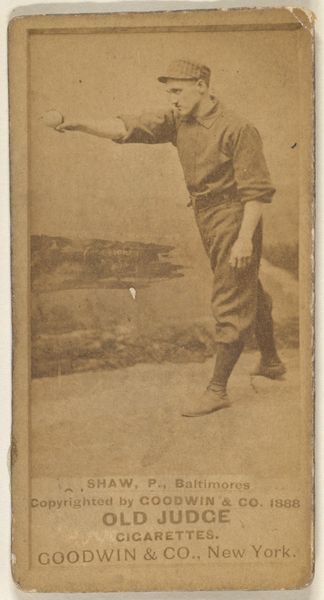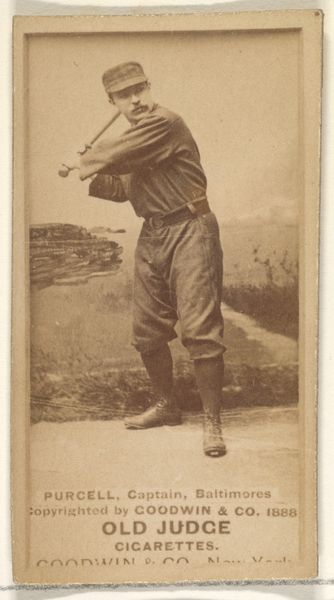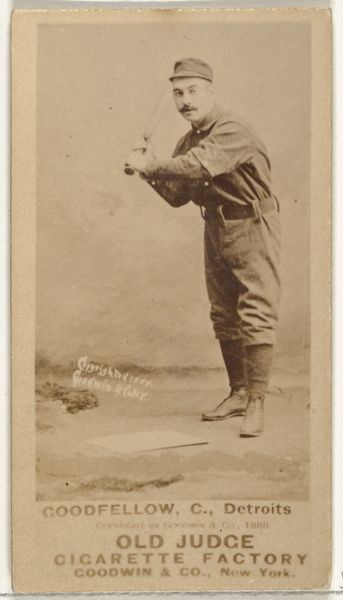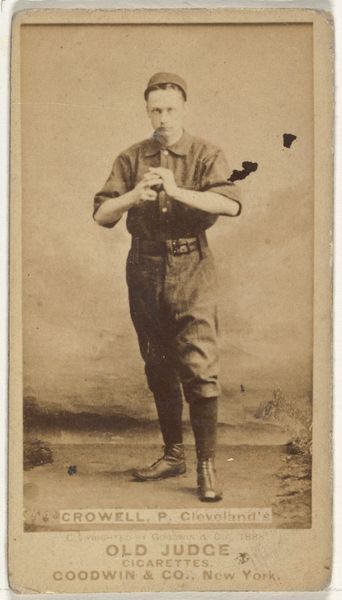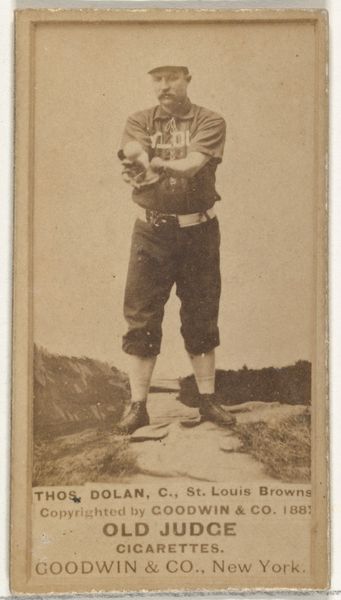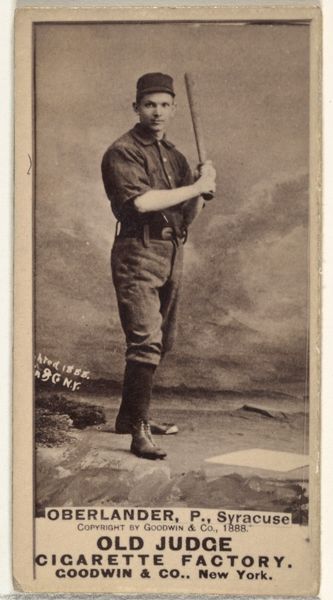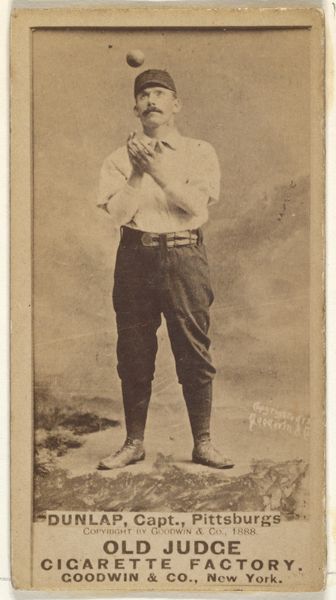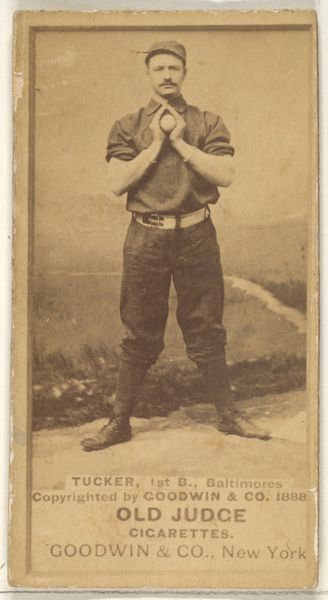
Samuel W. "Sam" Trott, Catcher, Newark, from the Old Judge series (N172) for Old Judge Cigarettes 1888
0:00
0:00
print, photography, collotype
#
portrait
# print
#
baseball
#
photography
#
collotype
#
19th century
#
men
#
athlete
Dimensions: sheet: 2 11/16 x 1 3/8 in. (6.9 x 3.5 cm)
Copyright: Public Domain
Curator: This is an 1888 collotype print featuring Samuel W. "Sam" Trott, a catcher for Newark, from the "Old Judge" series, created by Goodwin & Company. These were originally included in Old Judge Cigarettes packs. Editor: It's got a sepia tone and it feels… industrial almost. There’s a certain grittiness that you wouldn’t expect from a baseball card. He looks sturdy, but those clothes... rough, used, heavily material. Curator: Yes, Goodwin & Company was known for capitalizing on the burgeoning popularity of baseball by inserting these cards into cigarette packs. Think about the massive production required. The collotype process itself involves creating a photographic image on a gelatin-coated plate, then using it for printing. These weren't precious objects, but rather mass-produced commercial items designed to promote cigarette sales and baseball culture. Editor: It's that mass production that interests me. Those packs meant someone had to grow the tobacco, manufacture the cigarettes, print the cards, and assemble it all. Think about those labor conditions, packaging all those dreams in smoke and card stock. Look closely at the uniform. Is that patched or just incredibly worn out? This isn't just baseball. It's a visual document about class and labor at the turn of the century. Curator: Absolutely. The cards helped solidify the image of the baseball player as a hero and the game as a national pastime. However, it also served the purpose of promoting smoking culture and the Goodwin’s company brand. Editor: I see a direct link between mass-produced desires – both the desire to emulate athletic prowess and the physical need for nicotine. It's all so cleverly interwoven and readily available through industrial processes, all creating a powerful symbol of late 19th-century America. Curator: It’s quite a fascinating collision of sports, celebrity culture, and advertising practices of the era. It marks baseball as part of that emerging American identity. Editor: Seeing it framed in that light helps me consider what aspects of American life, good and bad, are embedded within this mass-produced card.
Comments
No comments
Be the first to comment and join the conversation on the ultimate creative platform.
